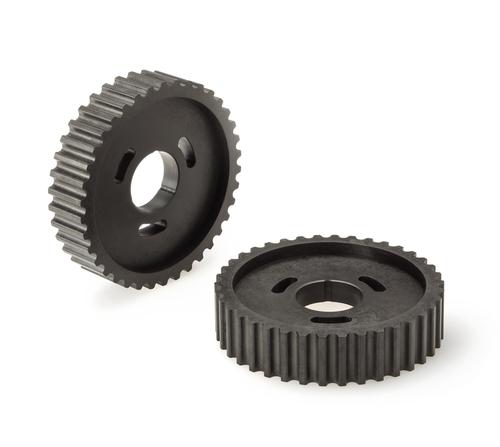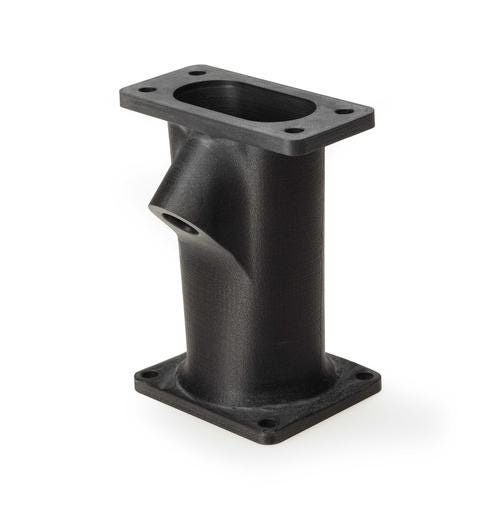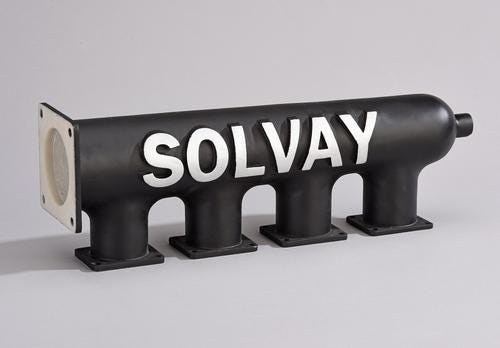December 15, 2015

Designers of the Polimotor 2 automotive plastic engine have given more detail about which parts will be made from which plastics. Project leader Matti Holtzberg, well-known automotive innovator, has said up to 10 engine parts will be made using some of Solvay's materials, as we've previously reported.
The two companies have so far revealed materials for three different components, and will announce more in the next few weeks. Two parts will be 3D printed. The three materials are Torlon PAI (polyamide-imide) for an injection-molded cam shaft sprocket, a 3D-printed plenum chamber made with reinforced Sinterline Technyl PA (polyamide) 6, and a 3D-printed fuel intake runner fabricated from KetaSpire PEEK (polyetheretherketone).

Holtzberg's goal in the Polimotor 2 project is to develop an all-plastic, four-cylinder, double-overhead CAM engine weighing 138 lb to 148 lb (63 kg to 67 kg), or about 90 lb (41 kg) less than the standard, all- or mostly metal engine in today's production model cars. Engine parts targeted for metals replacement are the water pump, oil pump, water inlet/outlet, throttle body, fuel rail, and cam sprocket, as well as other high-performance components Polimotor hasn't named yet.
Additional Solvay materials for the as-yet-unannounced parts will include Amodel PPA (polyphthalamide), AvaSpire PAEK (polyaryletherketone), Radel PPSU (polyphenylsulfone), Ryton PPS (polyphenylene sulfide), and Tecnoflon VPL fluoroelastomers. Solvay is the lead material supplier in this project, and also played a major role in the success of the first Polimotor engine, also conceived by Holtzberg, in the early 1980s.

The 3D-printed fuel intake runner fabricated from a reinforced grade of KetaSpire PEEK was produced by Arevo Labs, which recently opened its doors, offering a commercial on-demand service for manufacturing 3D-printed, optimized, PEEK- and PAEK-based carbon composite production parts. The runner was produced using Arevo's Reinforced Filament Fusion technology, developed specifically to address 3D-printed, high-performance, end-production parts using composites.
"The intake runners in the original Polimotor engine were made from aluminum, but today the automotive industry relies almost entirely on injection-molded nylon," said Holtzberg in a press release. "That choice of materials is changing now too, as automakers seek innovative new alternatives like Solvay's PEEK that can withstand rising under-the-hood temperatures caused by the growing use of turbochargers and engine downsizing, both of which are resulting in higher specific power outputs." Replacing the original aluminum runner with Solvay's PEEK reduced the part's weight by half. The custom-formulated grade of KetaSpire KT-820 PEEK was reinforced with a 10% carbon fiber loading.
About the Author(s)
You May Also Like



